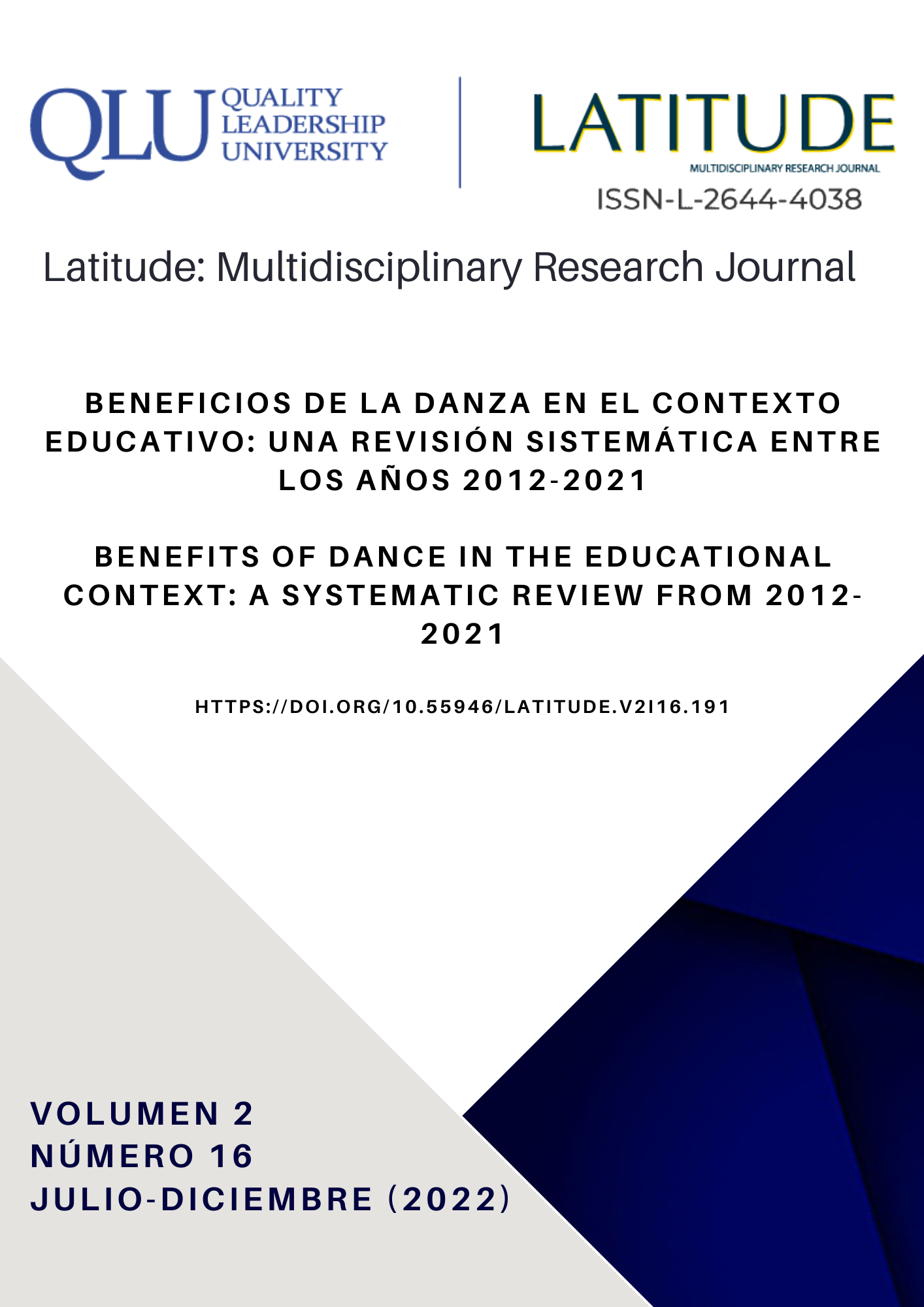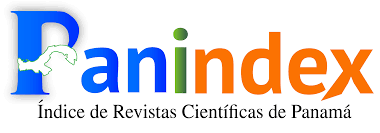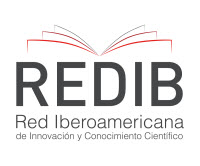

Esta obra está bajo una licencia internacional Creative Commons Atribución-NoComercial-CompartirIgual 4.0.
Esta obra está bajo licencia internacional https://creativecommons.org/licenses/by-nc-sa/4.0/deed.es
La revista (y sus contenidos) emplean las licencias Creative Commons, específicamente la del tipo CC BY NC SA 4.0, la cual establece que “el beneficiario de la licencia tiene el derecho de copiar, distribuir, exhibir y representar la obra y hacer obras derivadas siempre y cuando reconozca y cite la obra de la forma especificada por el autor o el licenciante”. La licencia del tipo CC BY NC SA 4.0 contempla tres categorías,
- Atribución.
- No Comercialización de la obra.
- Compartir igual
Los lectores son libres de:
- Compartir — copiar y redistribuir el material en cualquier medio o formato
- Adaptar — remezclar, transformar y construir a partir del materialLa licenciante no puede revocar estas libertades en tanto usted siga los términos de la licencia
- Siempre y cuando se respeten y contemplen la atribución de autoría y la no comercialización del material.
Resumen
La educación formal pretende la transmisión de conocimientos, valores y habilidades a los alumnos, en un contexto social e individual donde se pueden presentar problemas que afectan al proceso formativo, como el sedentarismo, el estrés, la falta de relaciones sociales y el compromiso por el estudio. Dado que la práctica regular de la danza mejora el bienestar general de las personas, el objetivo de esta revisión sistemática es conocer cómo se aplica esta actividad en el contexto educativo y que beneficios reporta. Se empleo la metodología PRISMA para realizar la revisión. Se consultaron las bases de datos Pub Med, Science Direct y Web of Science, empleando las palabras clave “dance, school, college, students”, entre los años 2012-2021- Después de aplicar los criterios de inclusión/exclusión, se seleccionaron 11 artículos para un análisis completo. La danza se aplica en forma de programas extracurriculares, con una o más sesiones de entre 60 min a 90 min por semana, para mejorar el bienestar físico, emocional y las relaciones sociales de los alumnos. Para el caso de los estudiantes universitarios, la práctica de la danza mejora los indicadores de estrés y depresión. La aplicación de la danza en el contexto educativo, puede contribuir con la formación integral de los alumnos en un entorno agradable, que puede maximizar la experiencia del aprendizaje.
Palabras clave:
Citas
Chaiklin, S., & Wengrower, H. (2015). The Art and Science of Dance/Movement Therapy: Life Is Dance. Routledge. DOI: https://doi.org/10.4324/9781315693477
Cooper, H., Hedges, L., & Valentine, J. (2009). The Handbook of Research Synthesis and Meta-Analysis (Segunda). Sage. https://www.russellsage.org/publications/handbook-research-synthesis-and-meta-analysis-second-edition
Donath, L., Roth, R., Hohn, Y., Zahner, L., & Faude, O. (2014). The effects of Zumba training on cardiovascular and neuromuscular function in female college students. European Journal of Sport Science, 14(6), 569-577. https://doi.org/10.1080/17461391.2013.866168 DOI: https://doi.org/10.1080/17461391.2013.866168
Edwards, M. J., May, T., Kesten, J. M., Banfield, K., Bird, E. L., Powell, J. E., Sebire, S. J., & Jago, R. (2016). Lessons learnt from the Bristol Girls Dance Project cluster RCT: Implications for designing and implementing after-school physical activity interventions. BMJ Open, 6(1), e010036. https://doi.org/10.1136/bmjopen-2015-010036 DOI: https://doi.org/10.1136/bmjopen-2015-010036
Gutko, A., Letiagina, E., Orlova, E., Suvorova, O., & Kuzminykh, L. (2019). Dynamics of Students’ Psychological and Emotional States in Dance Movement Training. 151-160. https://doi.org/10.22364/htqe.2019.13 DOI: https://doi.org/10.22364/htqe.2019.13
Hagen, E. H., & Bryant, G. A. (2003). Music and dance as a coalition signaling system. Human Nature, 14(1), 21-51. https://doi.org/10.1007/s12110-003-1015-z DOI: https://doi.org/10.1007/s12110-003-1015-z
Hogg, J., Diaz, A., Del Cid, M., Mueller, C., Lipman, E. G., Cheruvu, S., Chiu, Y., Vogiatzi, M., & Nimkarn, S. (2012). An after-school dance and lifestyle education program reduces risk factors for heart disease and diabetes in elementary school children. Journal of Pediatric Endocrinology & Metabolism: JPEM, 25(5-6), 509-516. https://doi.org/10.1515/jpem-2012-0027 DOI: https://doi.org/10.1515/jpem-2012-0027
Jago, R., Edwards, M. J., Sebire, S. J., Tomkinson, K., Bird, E. L., Banfield, K., May, T., Kesten, J. M., Cooper, A. R., Powell, J. E., & Blair, P. S. (2015). Effect and cost of an after-school dance programme on the physical activity of 11-12 year old girls: The Bristol Girls Dance Project, a school-based cluster randomised controlled trial. The International Journal of Behavioral Nutrition and Physical Activity, 12, 128. https://doi.org/10.1186/s12966-015-0289-y DOI: https://doi.org/10.1186/s12966-015-0289-y
Kaltsatou, A., Mameletzi, D., & Douka, S. (2011). Physical and psychological benefits of a 24-week traditional dance program in breast cancer survivors. Journal of Bodywork and Movement Therapies, 15(2), 162-167. https://doi.org/10.1016/j.jbmt.2010.03.002 DOI: https://doi.org/10.1016/j.jbmt.2010.03.002
Kattenstroth, J.-C., Kalisch, T., Holt, S., Tegenthoff, M., & Dinse, H. (2013). Six months of dance intervention enhances postural, sensorimotor, and cognitive performance in elderly without affecting cardio-respiratory functions. Frontiers in Aging Neuroscience, 5, 5. https://doi.org/10.3389/fnagi.2013.00005 DOI: https://doi.org/10.3389/fnagi.2013.00005
López-Rodríguez, M. M., Baldrich-Rodríguez, I., Ruiz-Muelle, A., Cortés-Rodríguez, A. E., Lopezosa-Estepa, T., & Roman, P. (2017). Effects of Biodanza on Stress, Depression, and Sleep Quality in University Students. Journal of Alternative and
Complementary Medicine (New York, N.Y.), 23(7), 558-565. https://doi.org/10.1089/acm.2016.0365 DOI: https://doi.org/10.1089/acm.2016.0365
Martin, J. J. (1965). Introduction to the Dance. IICA.
Moher, D., Liberati, A., Tetzlaff, J., Altman, D. G., Altman, D., Antes, G., Atkins, D., Barbour, V., Barrowman, N., Berlin, J. A., Clark, J., Clarke, M., Cook, D., D’Amico, R., Deeks, J. J., Devereaux, P. J., Dickersin, K., Egger, M., Ernst, E., … Tugwell, P. (2009). Preferred reporting items for systematic reviews and meta-analyses: The PRISMA statement (Chinese edition). Journal of Chinese Integrative Medicine, 7(9), 889-896. https://doi.org/10.3736/jcim20090918 DOI: https://doi.org/10.3736/jcim20090918
Panagiotopoulou, E. (2018). Dance therapy and the public school: The development of social and emotional skills of high school students in Greece. The Arts in Psychotherapy, 59, 25-33. https://doi.org/10.1016/j.aip.2017.11.003 DOI: https://doi.org/10.1016/j.aip.2017.11.003
Pereira, A. P. S., Marinho, V., Gupta, D., Magalhães, F., Ayres, C., & Teixeira, S. (2019). Music Therapy and Dance as Gait Rehabilitation in Patients With Parkinson Disease: A Review of Evidence. Journal of Geriatric Psychiatry and Neurology, 32(1), 49-56. https://doi.org/10.1177/0891988718819858 DOI: https://doi.org/10.1177/0891988718819858
Pereira, N., & Marques-Pinto, A. (2017). Including educational dance in an after-school socio-emotional learning program significantly improves pupils’ self-management and relationship skills? A quasi experimental study. The Arts in Psychotherapy, 53, 36-43. https://doi.org/10.1016/j.aip.2017.01.004 DOI: https://doi.org/10.1016/j.aip.2017.01.004
Pereira, N., & Marques-Pinto, A. (2018). Development of a social and emotional learning program using educational dance: A participatory approach aimed at middle school students | Semantic Scholar. Studies in Educational Evaluation, 59, 52-57. https://doi.org/10.1016/j.stueduc.2018.03.003 DOI: https://doi.org/10.1016/j.stueduc.2018.03.003
Poitras, V. J., Gray, C. E., Borghese, M. M., Carson, V., Chaput, J.-P., Janssen, I., Katzmarzyk, P. T., Pate, R. R., Connor Gorber, S., Kho, M. E., Sampson, M., & Tremblay, M. S. (2016). Systematic review of the relationships between objectively measured physical activity and health indicators in school-aged children and youth. Applied Physiology, Nutrition, and Metabolism = Physiologie Appliquee, Nutrition Et Metabolisme, 41(6 Suppl 3), S197-239. https://doi.org/10.1139/apnm-2015-0663 DOI: https://doi.org/10.1139/apnm-2015-0663
Rial, T., & Villanueva, C. (2016). El Flashmob como propuesta de innovación educativa en expresión corporal y danza (Flashmob as a proposal for educational innovation in body expression and dance) | Retos. Retos, 29, 126-128. DOI: https://doi.org/10.47197/retos.v0i29.35394
Ruz, R. P., Granados, D. I., Hervás, M. F., & Jiménez, J. L. U. (2019). Proyecto de baile flamenco: Desarrollo motriz y emocional en educación infantil. Retos: nuevas tendencias en educación física, deporte y recreación, 35, 396-401.
Sandberg, E., Möller, M., Särnblad, S., Appelros, P., & Duberg, A. (2021). Dance intervention for adolescent girls: Effects on daytime tiredness, alertness and school satisfaction. A randomized controlled trial. Journal of Bodywork and Movement Therapies, 26, 505-514. https://doi.org/10.1016/j.jbmt.2020.09.001 DOI: https://doi.org/10.1016/j.jbmt.2020.09.001
Sebire, S. J., Edwards, M. J., Kesten, J. M., May, T., Banfield, K. J., Bird, E. L., Tomkinson, K., Blair, P., Powell, J. E., & Jago, R. (2016). Process evaluation of the Bristol girls dance project. BMC Public Health, 16, 349. https://doi.org/10.1186/s12889-016-3010-4 DOI: https://doi.org/10.1186/s12889-016-3010-4
Trudeau, F., Laurencelle, L., & Shephard, R. J. (2004). Tracking of physical activity from childhood to adulthood. Medicine and Science in Sports and Exercise, 36(11), 1937-1943. https://doi.org/10.1249/01.mss.0000145525.29140.3b DOI: https://doi.org/10.1249/01.MSS.0000145525.29140.3B
Vicario, T., & Chambliss, C. (2001). The Benefits Associated with Dance Education for Adolescent Girls. https://eric.ed.gov/?id=ED448404
Wang, Z., An, G., Zhang, W., & Yang, G. (2019). The effect of jazz dance on physical and mental health of students with different physical fitness. The Journal of Sports Medicine and Physical Fitness, 59(5), 880-885. https://doi.org/10.23736/S0022-4707.18.08025-8 DOI: https://doi.org/10.23736/S0022-4707.18.08025-8
Zheng, C., & Ji, H. (2021). Analysis of the intervention effect and self-satisfaction of sports dance exercise on the psychological stress of college students. Work (Reading, Mass.), 69(2), 637-649. https://doi.org/10.3233/WOR-213505 DOI: https://doi.org/10.3233/WOR-213505
 https://scholar.google.com/citations?hl=en&user=bXTm8f0AAAAJ
https://scholar.google.com/citations?hl=en&user=bXTm8f0AAAAJ

















